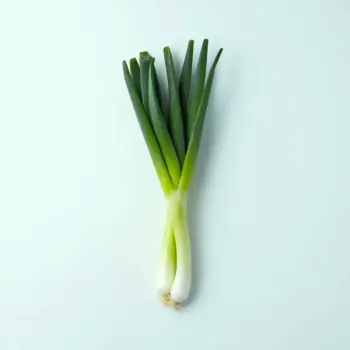Onions vs Green Onions are compared to help cooks understand their distinct flavors, textures, and culinary uses, which range from being a base in cooked dishes to a fresh garnish in salads and other recipes.

Onions, also known as bulb onions or common onions, are root vegetables with a sharp, pungent flavor that mellows and sweetens upon cooking. Available in various colors, they form the foundation of flavor in many culinary traditions.

Green onions, also referred to as scallions or spring onions, are young onions harvested before the bulb has fully developed. They feature a milder taste with a crisp texture and are often used raw or lightly cooked.
Onions have a bold, pungent flavor that intensifies with age and mellows when cooked, while green onions offer a gentler bite that's perfect for raw applications. Texture-wise, onions become soft and caramelized when cooked; green onions often retain a subtle crunch. Onions are typically used as a base for cooked dishes, whereas green onions are often used as a garnish or in salads.

Your ultimate Recipe Box, Meal Planner, and Cooking Class all in one
In soups and stews, onions are a fundamental ingredient, contributing a deep, savory base. Caramelized onions can add a layer of complexity to French onion soup or a hearty beef stew. Green onions, with their mild flavor, are perfect as a fresh, vibrant garnish on top of a finished soup or stew, adding both color and a crisp contrast.
Onions are ideal for stir-fries, imparting a savory, umami quality. They are a staple in dishes like beef and onion stir-fry or caramelized onion teriyaki. Green onions are frequently used in Asian cuisine, both cooked and as a garnish. They bring freshness to dishes like scallion pancakes, sesame noodles, and are a must in Mongolian beef.
Raw onions, particularly red onions, are often sliced thinly and added to salads for a sharp bite, or they can be pickled to add a tangy crunch to Mexican salsas and Greek salads. Green onions add a subtle piquancy to salads and are also a key ingredient in dressings and vinaigrettes, providing a hint of sharpness without overpowering other flavors.
Both onions and green onions are low in calories and rich in vitamins and minerals, making them a healthy addition to any diet.
| Nutrient | Onions ( per 100 grams ) | Green Onions ( per 100 grams ) |
|---|---|---|
| Fat | 0.1g | 0.2g |
| Fiber | 1.7g | 2.6g |
| Protein | 1.1g | 1.8g |
| Calories | 40 | 32 |
| Vitamin C | 7.4mg | 18.8mg |
| Carbohydrates | 9.3g | 7.3g |
Green onions can replace regular onions in some recipes, especially those that call for raw onions or require a milder flavor. However, they may not hold up well to prolonged cooking.
Yes, the white parts of green onions have a more intense flavor and are often cooked, while the green parts are milder and commonly used as a fresh garnish.
Store onions in a cool, dry place with good air circulation. Green onions should be refrigerated and kept in a plastic bag or a glass of water for maximum freshness.
They are not directly interchangeable due to flavor and texture differences, but with adjustments, they can be substituted for one another in many recipes.
Both are low in calories and contain beneficial nutrients. Onions have antioxidant properties, while green onions are a good source of vitamin C and vitamin A.